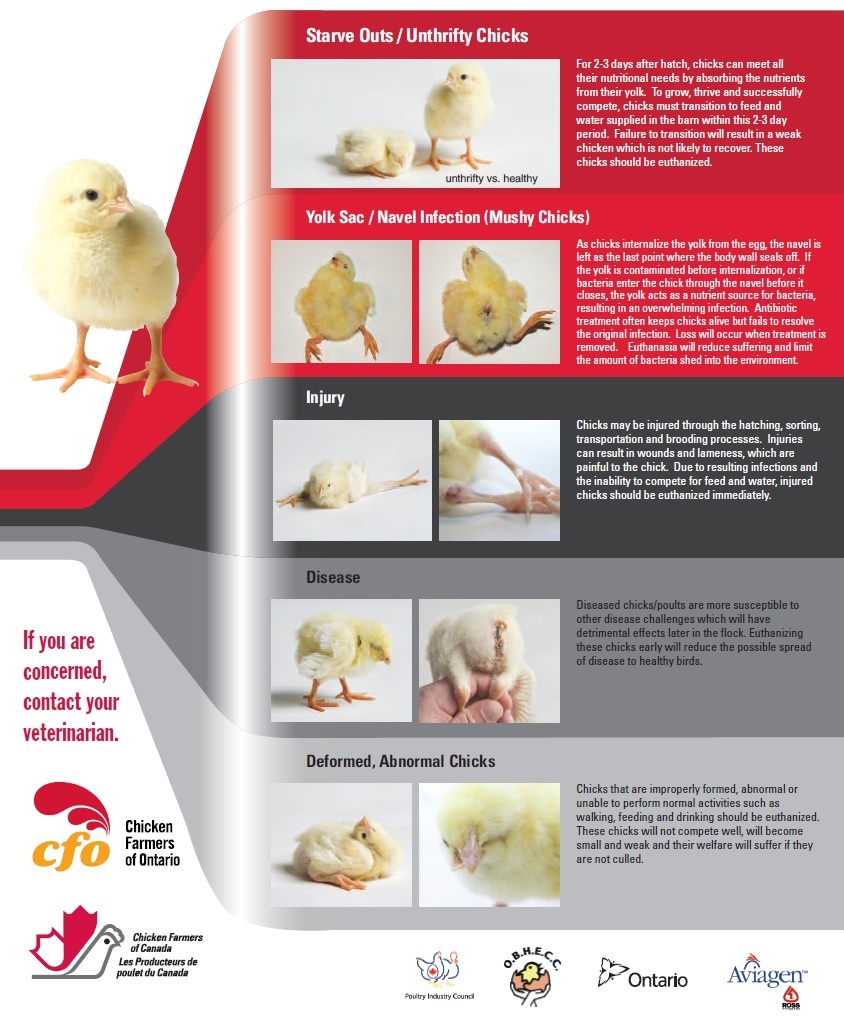


 Français
Français


Despite the quality procedures and diligence at the hatcheries and in early brooding in the barn, there will always be a small proportion of chicks that are unable to thrive. These chicks can act as reservoirs of bacterial and viral infections. One of the most effective tools available to the farmer is the early culling of unthrifty, ill or injured chicks. The greatest positive impact is achieved when culling is performed immediately after those chicks are identified.
In many cases, an effective culling program can improve animal welfare, food safety, and minimize or replace the need for antibiotic therapy. It may be necessary to euthanize chicks for a variety of reasons, all of which impact the health, welfare, and productivity of a flock. The following is a guide to identify compromised chicks in the first 10 days of life. For more information on euthanasia techniques, visit the Practical Guidelines for On-Farm Euthanasia of Poultry.
